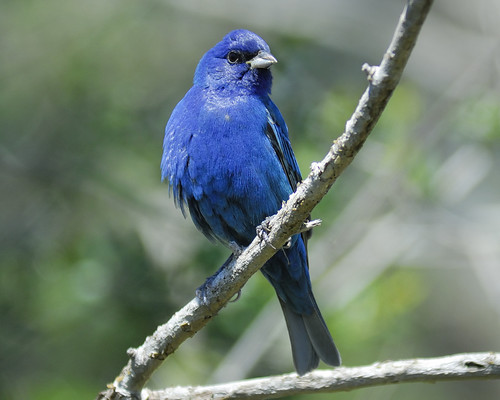tags: Indigo Bunting, Passerina cyanea, birds, mystery bird, bird ID quiz
[Mystery bird] Indigo Bunting, Passerina cyanea, photographed on High Island, Texas. [I will identify this bird for you in 48 hours]
Image: Joseph Kennedy, 7 April 2009 [larger view].
Nikon D200, Kowa 883 telescope with tsn-pz camera eyepiece 1/400s f/8.0 at 1000.0mm iso400.
Please name at least one field mark that supports your identification.


This appears to be a bunting, I think an male Indigo Bunting in breeding plumage--blue all over, with black face. The bill seems to blackish on top, and blue-grayish lower bill. It's hard to tell for sure, but it looks like black wings. Another possible is the Blue Bunting, but given location of photo, and the ranges of each, I think this is likely an Indigo Bunting.
I'm going to go with the Indigo Bunting as well. In addition to the difference in the blue bunting and indigo bunting's ranges, the Indigo Bunting appears to have more of a V shaped tail, as seen above than the blue bunting does.
Norwegian Blue Bunting. You can recognize it by the nails that attach it to the branch.
Is this not a chicken? Specifically a Dutch Bantam chicken?
Blue Lobster. It's blue and I'm hungry.
Blue Bunting has a deeper blue color and a differently shaped bill. Plus, it is normally not found as far north as High Island, though there is at least one Louisiana record of the species.